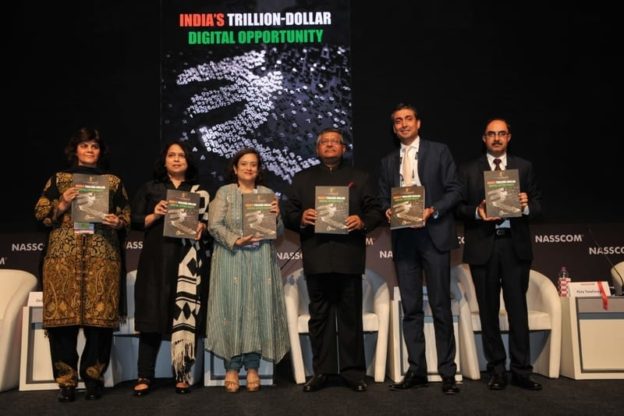According to a recent report, India has the potential to create over US $1 trillion of economic value from the digital economy by 2025, up from around US $200 billion currently.
Released by the Ministry of Electronics and Information Technology (MeitY), the report takes stock of the digitally-enabled change that is underway and outlines a roadmap for the country over the next few years.
India’s digital consumer base is the second largest in the world and is rapidly growing. The government’s digital model is narrowing the digital divide and bringing technology to even the most remote parts of the country.
About 50 percent of the potential economic value of the US $1 trillion could come from new digital ecosystems in diverse sectors, including, among others, financial services, agriculture, healthcare, logistics, jobs, and e-governance.
Digital India is the government’s flagship program and has been transforming the country into a digitally empowered society and knowledge economy. The rate of technology adoption increased between 2013 and 2018, bolstered by government initiatives and mobile penetration. During this time, the country clocked 1.22 billion Aadhaar registrations, 870 million Aadhaar-linked bank accounts, and 98 million daily e-government transactions. Building on this foundation, India can further scale-up its digital economy.
A press release said that India has nearly half a billion Internet users. This will create a huge market for digital services, platforms, applications, content, and solutions.
Essentially, India could see a five-fold increase in economic value through digital transformation in 2025, by representing opportunities for global and local businesses, start-ups, and innovators to invest in emerging technologies (like AI, blockchain, or drones) in ways that are customised to the country’s needs.
India is the second-fastest digitising economy among the leading economies of the world, according to the report’s Country Digital Index, which is based on 30 metrics to measure digital adoption in 17 mature and emerging digital economies (Brazil, China, Indonesia, Russia, South Korea, Sweden, and the United States).
The report identified “thirty digital themes” that can be scaled up nationally to accelerate progress in nine priority areas. For progress in the same, the country needs to create robust IT infrastructures and software capabilities, and use technology to serve key national priorities, like healthcare, education, energy, next-gen financial services, and e-governance.
Further, the report said that India’s future digital economy could generate productivity and output enough to support 55 to 60 million workers in 2025. To achieve this, “concerted action is required in a ‘Team India’ spirit with collaboration between government, private, and social sectors” the report said.
Digital technologies fundamentally change work and create demand for new types of skills and job roles. Apart from digital coders and solution providers, many types of work will become digitally-enabled and necessitate workers to be trained in IT skills. For example, delivery personnel and drivers in the logistics and transportation sectors, healthcare workers, or advisory service agents in areas such as financing and agriculture, will all need retraining.
Team India will also work on areas related to IT and telecom infrastructure and services, e-governance, education, energy, and next-gen financial services, among others.
https://timesofindia.indiatimes.com/business/india-business/1-trillion-digital-economy-possible-in-next-four-years-assocham-report/articleshow/81232885.cms





